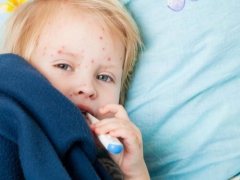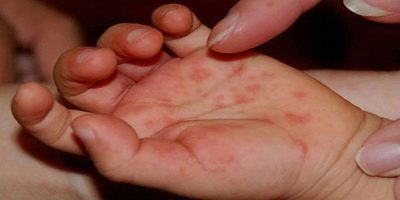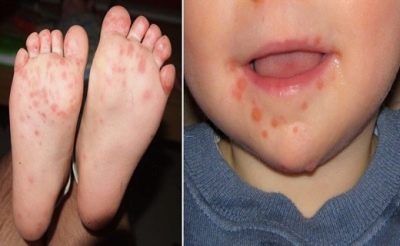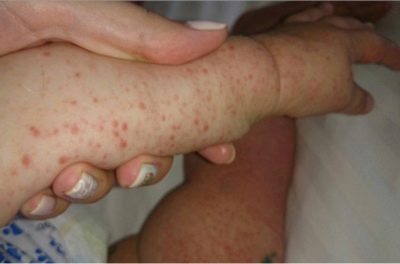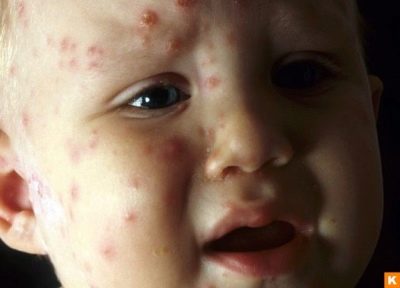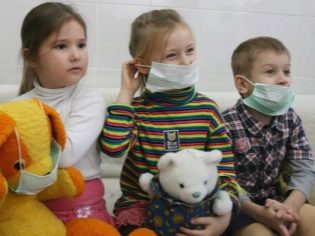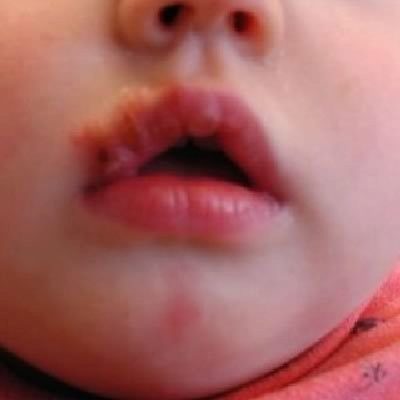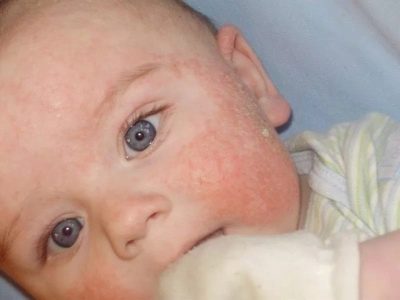What does an enteroviral infection rash look like in children?
Enteroviruses can cause specific skin manifestations in babies. Rash with enterovirus infection has its own specific features. This article will help parents recognize this condition in their child and distinguish it from other diseases, which are also accompanied by the development of rash.
What does it look like?
A child can get sick with an enterovirus infection very easily. Viruses are rapidly spreading through the air from a sick child to a healthy one. After the end of the incubation period, the infected child begins to show the specific symptoms of this infection.
Doctors may call such bulk elements also enteroviral exanthema. This condition develops in all babies who become ill with this infection. The severity of symptoms in this pathological condition is different. It largely depends on the child’s age, as well as the initial state of his health and the presence of concomitant diseases of internal organs.
In most cases, this clinical symptom occurs 1-3 days after normalization of body temperature. Localization of skin rashes can be very different. Bulk items appear on the neck, back, face, arms and legs of the baby. Such eruptions appear as bright red specks. The size of these formations is usually 2-4 mm.
It is important to note that the characteristic enterovirus rashes can also appear on the mucous membranes. They usually cover the tongue, the inner surfaces of the cheeks, the upper palate. If the course of the disease is more severe, such rashes can also extend to the oropharynx and pharynx.
Parents can notice these rashes on their own at home. To do this, they should carefully examine the pharynx of the sick child with a regular teaspoon. If the parents found out that the baby had some kind of rash on the mucous membranes, then it should be shown to the attending physician. Delay this can not be, because the development of the disease is usually rapid.
Some clinical types of enterovirus exanthema are accompanied by the development of multiple small vesicles or blisters on the body. Inside these lesions is serous or bloody fluid. It can flow out of the bubbles when they become injured. Any mechanical effects can lead to this condition. After the expiration of the fluid at the site of the former vesicle appears bleeding ulcer.
For healing of the skin from rash and epithelization of mucous membranes damaged by enterovirus infection, sufficient time is required. Usually they are fully restored within 7-10 days.
For the fastest healing of damaged mucous membranes in the oral cavity is very important to follow a sparing diet. Such food completely excludes any solid food that can cause additional damage to the child.
Related symptoms
Specific rash is not the only clinical sign that develops during enterovirus infection. This infectious disease is accompanied by the appearance of a whole complex of adverse symptoms in a sick child, which significantly worsens his general well-being. These manifestations are growing rapidly, within a few days from the end of the incubation period. It should be noted that infants carry an enterovirus infection more difficult than older children.
Once in the children's body and having begun its active reproduction, enteroviruses lead to the development of a strong inflammatory process. It is manifested by the appearance of intoxication syndrome in the child. A sick baby is rapidly increasing body temperature. Its values can be different and depend on the severity of the disease. Severe forms of the disease may even be accompanied by an increase in body temperature up to 38-39 degrees.
The general well-being of a sick child is significantly impaired. Anxiety and drowsiness increase, his appetite decreases and there are difficulties in falling asleep. Infants can refuse breastfeeding. Severe intoxication syndrome is accompanied by the development of headache and severe weakness. The sick kid tries to spend more time in his crib, and playing with his favorite toys does not give him any pleasure and joy at this time.
Loose stools are also a fairly common symptom with this infection. Severe illness is accompanied by frequent visits to the toilet. This leads to increased dehydration. The baby may also experience soreness in the tummy, which does not depend on meals. The severity of pain syndrome is very intense.
A sick baby often develops vomiting. It can occur not only after eating, but also against the background of a headache. The use of antipyretics significantly improves the overall well-being of the child and reduces the feeling of constant nausea that develops in a sick child.
Muscle pain can develop in a child as early as 2-3 days after the onset of the disease. The predominant localization of such pain syndrome is the arms and legs of the baby, the back and upper half of the body.
Quite often, muscle soreness has a paroxysmal character. The duration of such an attack can last from a couple of minutes to several hours.
Differences from other diseases
To establish the correct diagnosis, doctors must conduct additional examinations. They are necessary to exclude all diseases that occur with the development of similar symptoms. Various laboratory tests help doctors to conduct differential diagnostics. They also make it possible to detect the severity of functional disorders that have arisen in the children's body as a result of this disease.
Enterovirus infection quite often resembles the flu. Sick kids also feel "broken", pain in the muscles, their body temperature rises. An important difference between influenza and enterovirus infection is the seasonal nature and mass distribution.
For accurate differential diagnosis, it is necessary to conduct special serological tests that will accurately determine the causative agents of the disease.
Herpes infection - also one of the pathologies that can occur with the development on the skin of a child's specific skin rashes. Herpes-viruses have a fairly high selectivity. "Favorite" their localization - the mucous membranes. It should be noted that they can also cause damage to the skin. But it is found in children rarely enough.
The course of a herpetic infection is usually long. This disease is accompanied by a change in periods of complete well-being and exacerbations, when specific mucous eruptions appear on the mucous membranes and skin. It should be noted that the remission is quite long. The development of lesions leads to a pronounced decrease in immunity.
Mass outbreaks of herpes infections, as a rule, do not occur. Enterovirus infections, on the contrary, develop more often in children in crowded groups. Enteroviruses cause brighter symptoms than herpes viruses. This causes the main difference between these pathologies. Enterovirus infection is accompanied by a more rapid appearance of adverse symptoms.
Distinguishing chickenpox from enterovirus infection can be mainly based on a combination of symptoms. Chickenpox is quite rarely manifested in a child by the appearance of pain in his tummy. Chronic stool disorders are also uncharacteristic. Chicken pox items are usually more intense on the body. They can cover almost all of the skin.
Korevaya rubella can also occur with the appearance on the clean skin of the child of various rashes. It can be easily confused with a skin rash caused by an enterovirus infection. Helps establish the correct diagnosis collection history. If a preschool child has no vaccinations measles, and the rash on the skin is of a generalized (widespread) nature, it most likely means that it has measles.
Differential diagnosis of enterovirus infection is also carried out with different allergies. Allergic diseases, accompanied by the appearance of various rashes on the baby’s skin, develop only when allergens enter the children's body. Such pathologies occur in babies who have an increased sensitivity to certain substances or foods.
If a child has only a rash, but no fever and other symptoms of intoxication, then this indicates that he has developed a certain allergic pathology, and not an enterovirus infection.
For information on how enterovirus infection manifests in children, see the following video.
